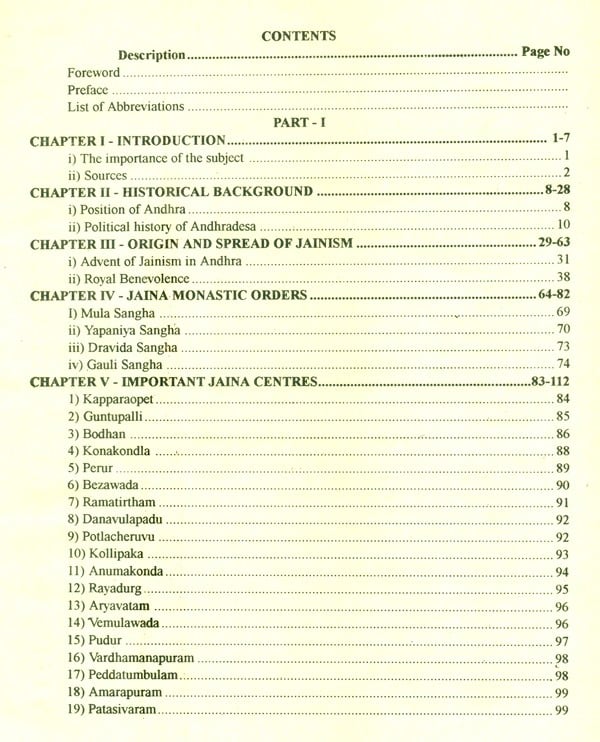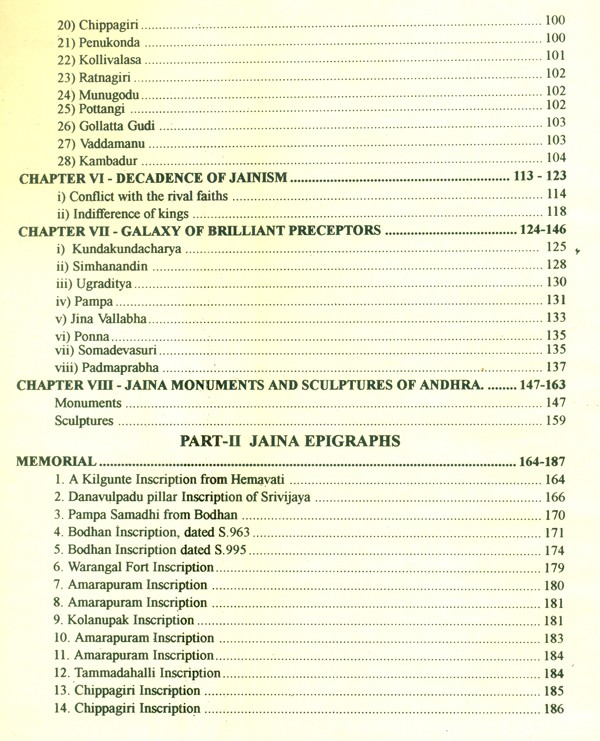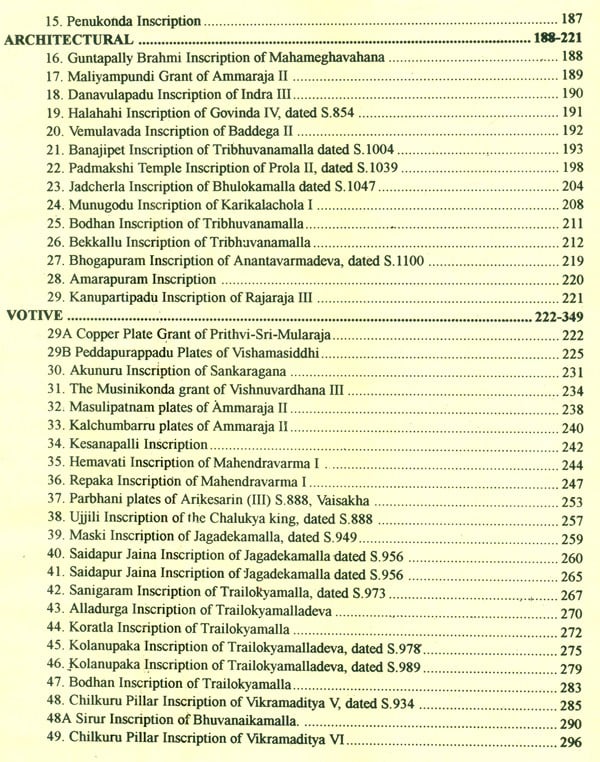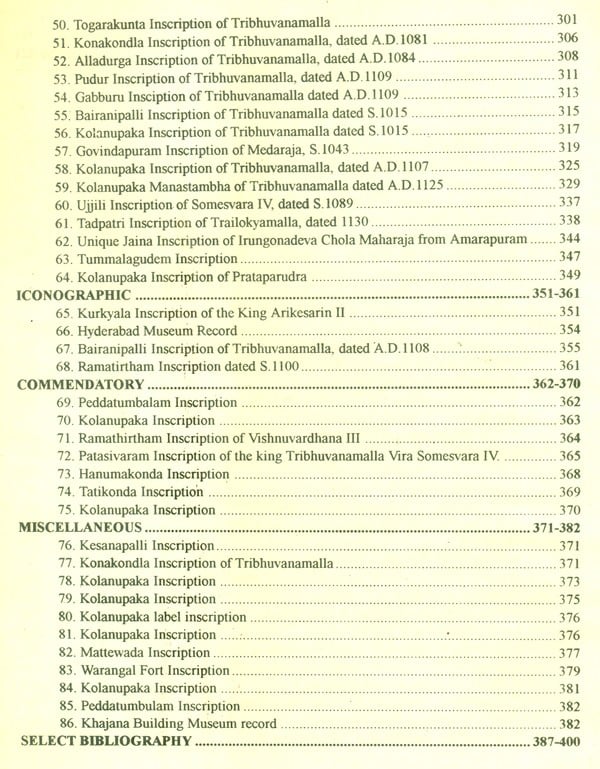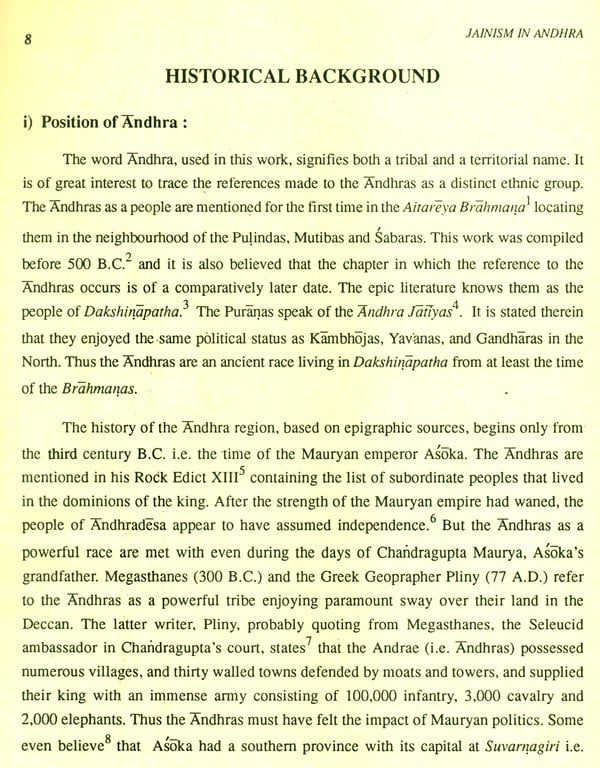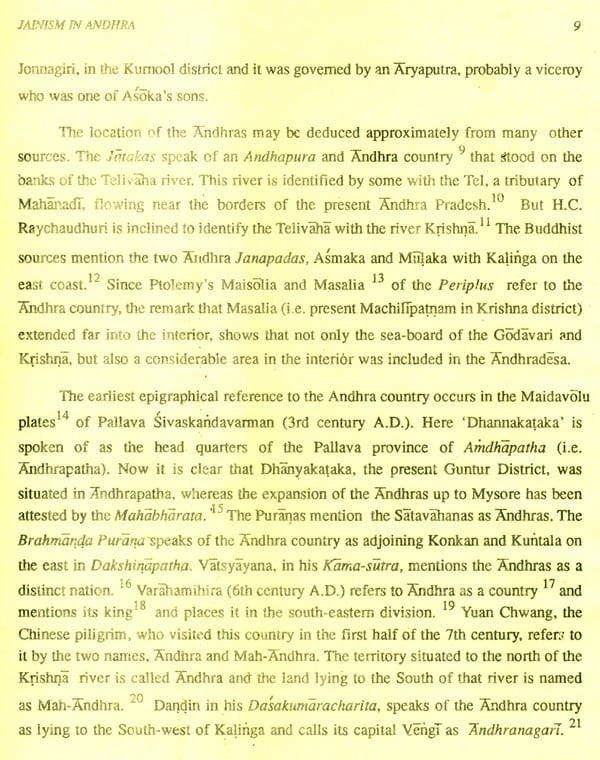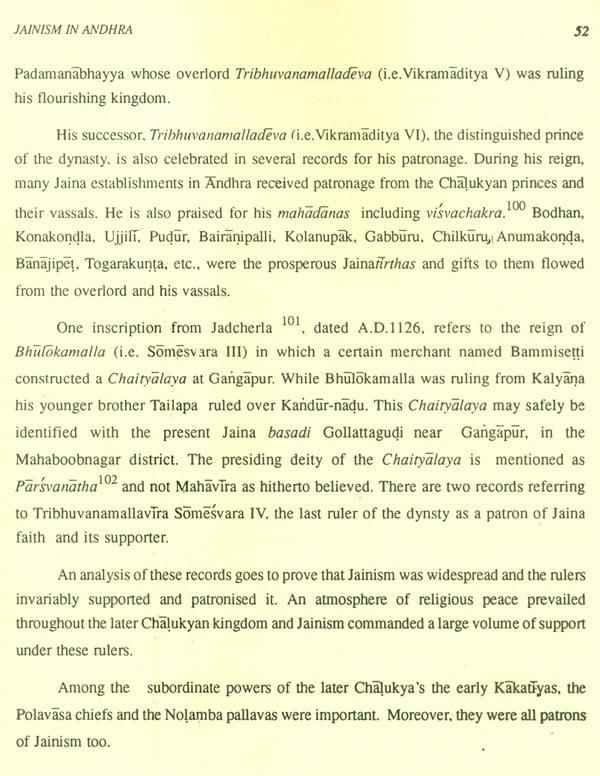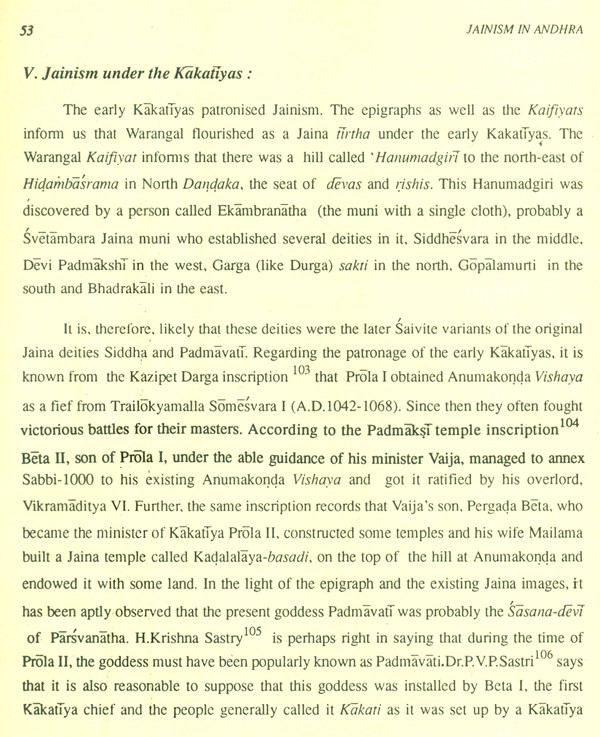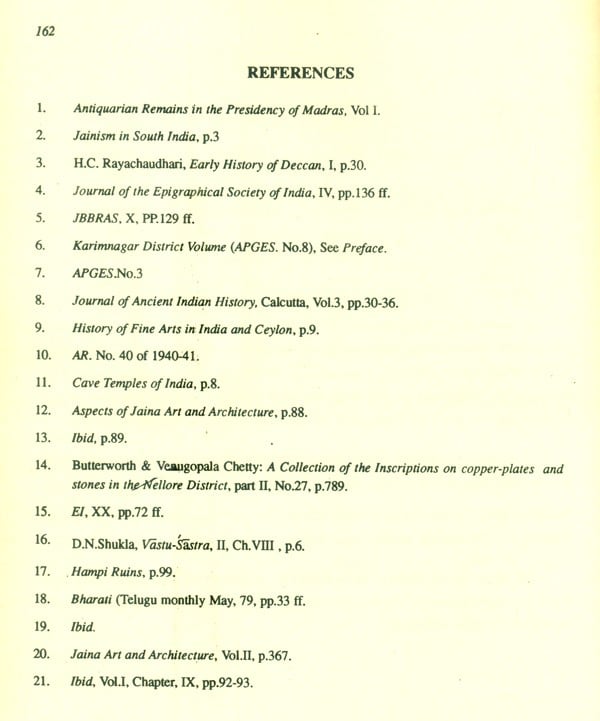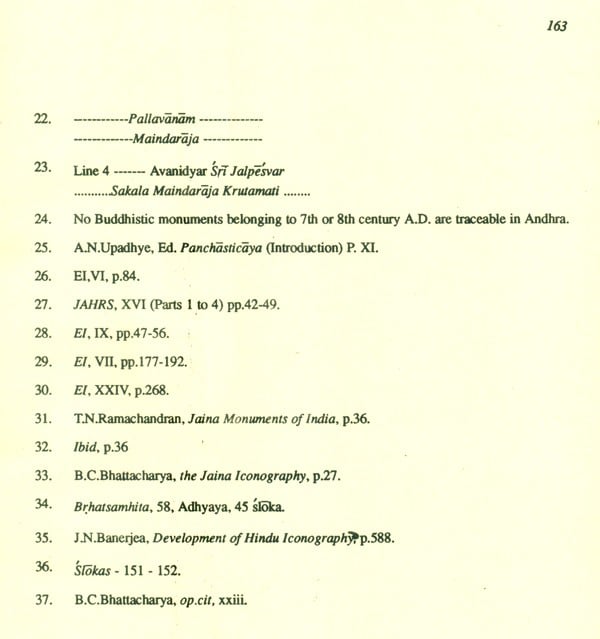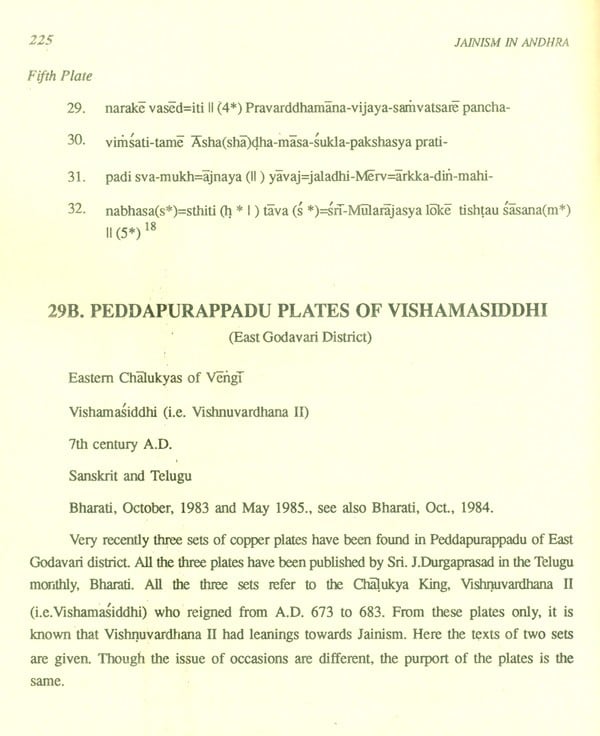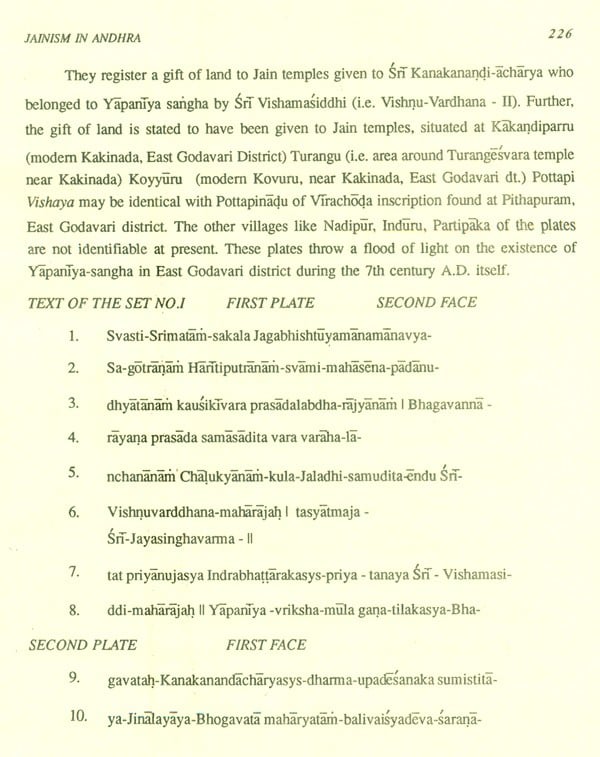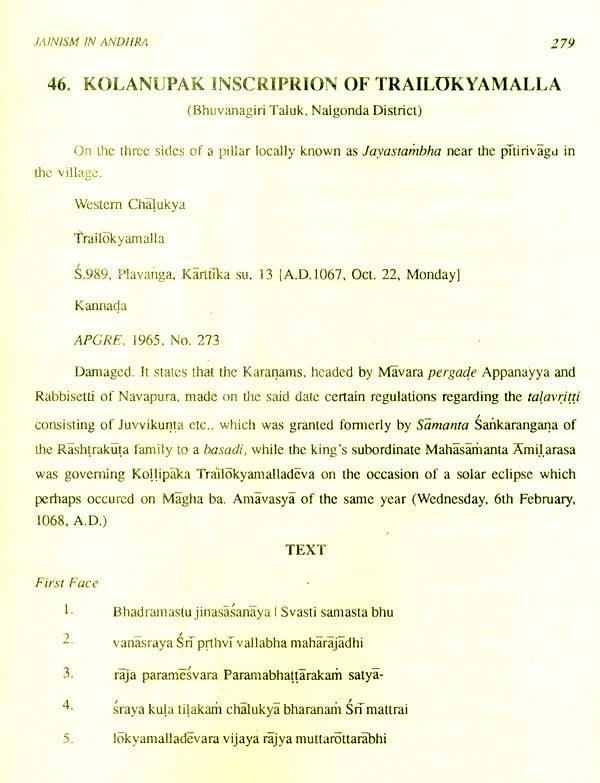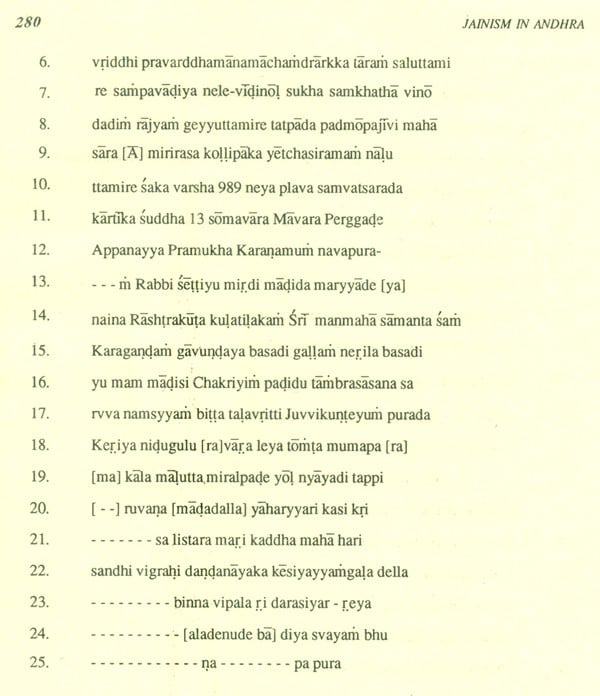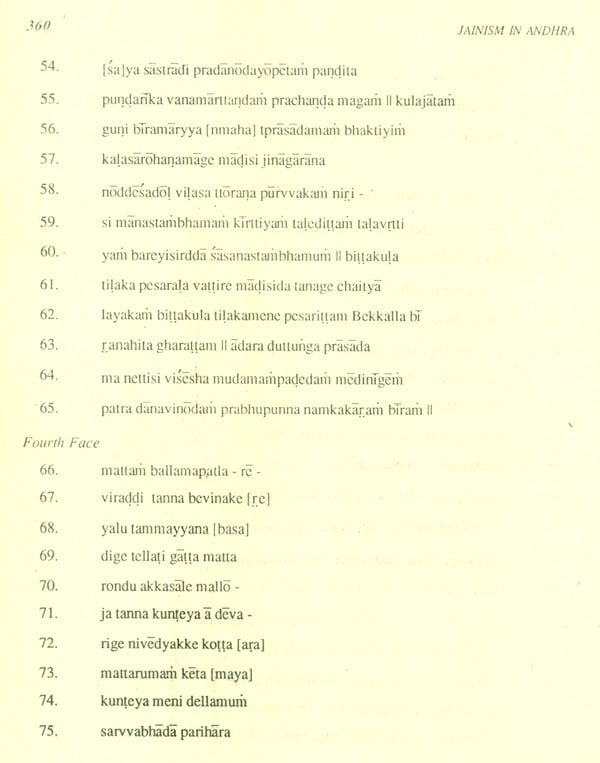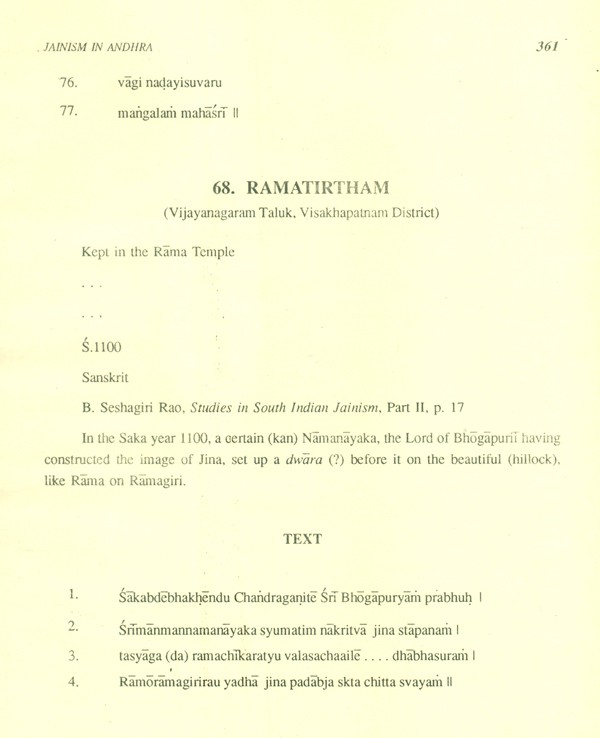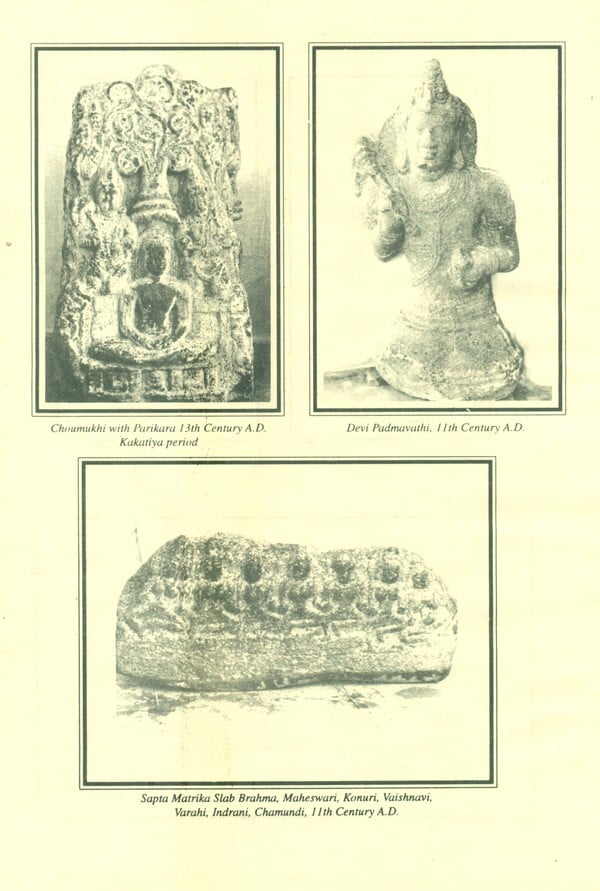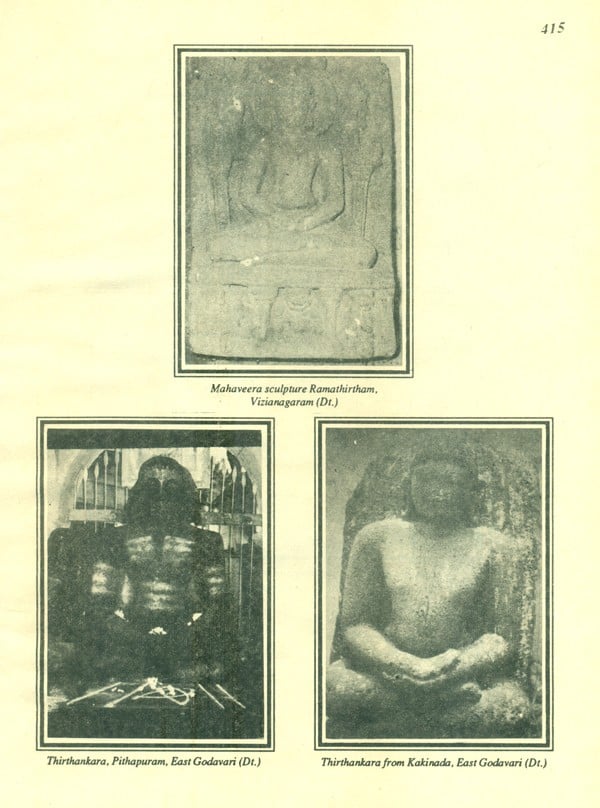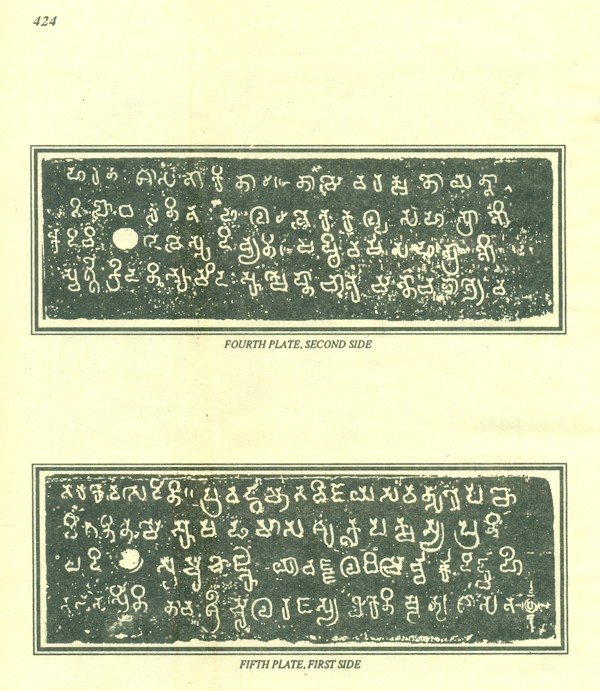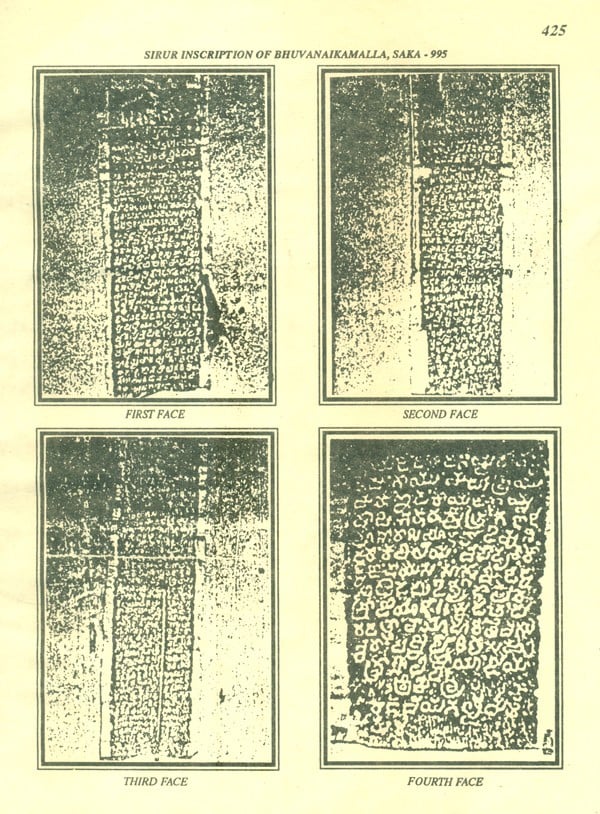
Jainism in Andhra- As Depicted in Inscriptions (An Old Book)
Book Specification
| Item Code: | UAB260 |
| Author: | G. Jawahar Lal |
| Publisher: | Prakrit Bharati Academy, Jaipur |
| Language: | English |
| Edition: | 1994 |
| Pages: | 446 (Throughout B/w Illustrations) |
| Cover: | HARDCOVER |
| Other Details | 10.00 X 8.00 inches |
| Weight | 930 gm |
Book Description
Although there is a wide divergence in traditions regarding the date of the introduction of Jainism in Andhradega and some of the Jaina works would have us believe that Mahavira himself preached his doctrine in Kalinga which included the northern districts of Andhra Pradesh, there is no doubt left by the extant literary and archaeological evidence that Andhra was one of the earliest recipients of this religion, which was already well-entrenched before the establishment of the Maurya empire in the fourth century Be. And the well-supported tradition centering round Chandragupta Maurya and Jaina patriarch Bhadrabahu clearly shows the strength of the faith in the Deccan. The efforts of Ashoka's grandson and successor, Samprati, and the Mahameghavahana King Sada, whose quadruple record from Guntupalli is one of the most sensational recent epigraphically discoveries, turned it into a competitor for the Buddhism, which had a much wider appeal due to the unstinting patron- age of Ashoka, the Satavahanas and local rulers like Kuberaka and no less to its less rigid and practical attitude to its disciplinary code. It continued with a comparatively lesser strength but with undiminishing faith in its rigid moral and disciplinary code till about sixth century A.D. But with the decline in the fortunes of Buddhism and rise of the Eastern Chalukyas about mid-seventh century, the fortunes of Jainism underwent a favorable change mainly due to their lavish patronage as well as that of other ruling powers including the Rashtrakutas, Chalukyas of Vernulavada. Later Chalukyas of Kalyana, the Kakatiyas, the Polavasa and Nolamba Pallava chiefs, many of whom were devout Jainas while most of them were followers of Brahman cal faiths like Saivism and Vaishnavism besides observing age-old Vedic rites, but following the traditional religious catholicity, extended more often than not, lavish patronage faiths. And when this patronage to other came to be withdrawn after the Later Chalukyas, the Jainas also lost much of their influence and power in the Society and the rise of antagonistic cults, especially the Virasaivism or the Lingayats added to their ~owes and the climax came with the Muslim invasion in the thirteen Century A.D. though, it must be added, they never ceased to exist completely as did the Buddhists.
The present dissertation has been divided into two parts. Part I has six chapters and one appendix. The opening chapter contains introductory remarks on the subject and its scope. A brief survey of sources is also attempted. Geographical position of Andhradega and its political history have been dealt with briefly in Chapter II. From the time of the Eastern Chalukyas of Vega to the emergence of the Kakatiyas, the Western and South-Western Andhra, i.e., the present Telangana and Rayalaseema, were divided among the imperial powers, like the Western Chalukyas, the Rashtrakutas, the Later Chalukyas, the Pal lavas and the Cholas. Since they ruled over Andhra from outside, their political history has been completely omitted in this chapter. But their patronage of Jainism has been elucidated in the subsequent chapter. Chapter III deals with the origin and spread of Jainism. Jaina monastic orders and their proliferation into smaller units have been treated in Chapter IV. A brief account of the individual Jaina centers is giving in chapter V. The decline and decadence of Jainism form the theme of Chapter VI. The activities of the brilliant preceptors and expositors of Jaina Law are adumbrated in the Appendix.
Part II contains exclusively the texts and summaries of eighty six Jaina records used source material for this work. The name of its find spot as been included in the title of the inscription. The names of the talk and district in which the find spot is situated are given within brackets just below the title. Information pertaining to the location of the inscription, dynasty to which it belongs or is assignable, the king to whose reign it belongs, the approximate date, language and the reference are also indicated. The texts and sometimes the summaries of inscriptions have been copied faithfully from the sources where they were originally published. Though the gusts of some records have already been published, their texts are given here for the first time. Some alterations have also been made, wherever necessary, in the purport as well as in the texts of published records. The texts of newly copied inscriptions have also been given. The abstracts are mainly intended to focus attention on the bearing of the inscription concerned on various aspects of Jainism as obtained in Andhra during the period of the present study.
It is my pleasant duty to acknowledge the debt of gratitude I owe to those who have helped me in various ways in the completion of my thesis. This work has been prepared under the supervision of my revered teacher Professor Ajay Mitra Shastri. Head of the Department of the Ancient Indian History, Culture and Archaeology, Nagpur University. He took pains to go through the entire work in its manuscript stage and made valuable suggestions on many points. In a word he was not only a genuine guide for my research but has also been a source of inspiration and encouragement to me, Words are indeed inadequate to express my indebtedness to him. I owe. an incalculable debt to my Director, Dr.N.Ramesan, Department of Archaeology and Museums, Government of Andhra Pradesh, Hyderabad, who encouraged. me to carryon my work by permitting me not only to make use of the source material of the department, published and unpublished, but also to visit all the Jaina vestiges in Andhra. It is difficult to express in a suitable form the debt of gratitude own, to Dr. P.V.Parabrahma Shastri, Deputy Director (Epigraphy) (Rtd.) Department of Archaeology and museums, Govt. of Andhra Pradesh, Hyderabad, for sparing his valuable time whenever I approached him for advice. I am also thankful to Shri A,Hiriyannaiah, Senior Lecturer in English, Government Arts College, Anantapur. who has read my typescript with patience and suggested some improvements. I am very much indebted to many of my well whishes and colleagues without whose inspiring words and encouragements this work would never have been completed.
The present work as stated in the preface, is chiefly base intimation contained in the numerous litchi and copper-plate inscription .hailing from the are districts of the present Andhradega. The evidence of eighty SIX meter 10 has been thoroughly scrutinized in the preparation of this work. Some of me have, In a t. been recently discovered. The information delved from traditions and literature has all) been utilized suitably, as and when it is supported by the record 1. The importance of the subject: The Jainas constitute today a small community in An , great respect among the Andhras. The reasons for this, ay unless we come to know something of the past history of J the means through which the Jainas dominated the political and cultural from the early times to the 14th century A.D.
Ancient relics, inscriptions and traditions indicate that y 109 n e eminent official of the state came under the influence of Jainism and Favor called the path of the Jaina religion. Robert Sewell 1 was the first to up Jaina antiquities ~d remains in almost all the districts of Andhra sea. It have not been properly noted and examined. Though the archaeological evience I strong enough to show that Jainism held fine ground in Andhra as a lee pop lard religion for twelve centuries or even more, this topic has recreate attention so far. The history of Buddhism in Andhra is well studied an 0ur end but very little is written about Jainism. Ram swami Ayyangar, Saletore, Deo and Desai have written on the history of Jainism in the peninsular India 2, but we do not get an adequate and comprehensive picture of the Jaina faith in Andhra in their works. Seshagiri Rao, M.S. Sarma3, Ramesan't, Hanumanta Rao and Gopalakrishna Murty", who have discussed the history of Jainism in Andhra have ignored some of the main I monastic orders that characterized Jainism in Andhra. Gopalakrishna Murty's work makes no use of epigraphically material. In the light of the discovery of new Jaina records, their observations and conclusions need a fresh look. Saletore primarily traces the development of the Jaina culture in the medieval period, neglecting the earlier period. S.B. Deo's work has completely omitted the history of Jainism in Andhra. Desai mainly concentrates on the study of Jaina inscriptions in Tamilnadu and Karnataka and gives only a brief account of the vicissitudes of Jainism in Andhra. Thus, the available books on Jainism do not adequately drawn upon its history in Andhra. In short, this subject has not so far received the attention it deserves.
II. Sources: Our sources are mainly epigraphically. They constitute our chief source for the I study of the history of the Jaina religion in Andhra, because they are full of information on the patronage of the Jaina devotees who contributed to the diffusion of culture in Andhra. The present work is based on the study of about eighty six records, some of them brought to light for the first time. The literary sources, which have been found to agree with the details contained in the epigraphs have been accepted and utilized in this work. The accounts from the Kaifiyats have also been taken into consideration as and when they synchronies with the recorded evidence. Since it is rightly observed by Woolley, that it is never wise to reject traditions off-hand; in most cases they contain a modicum of truth, even if it be only a background for fiction, traditional accounts have also been incorporated in this work.
Book's Contents and Sample Pages
